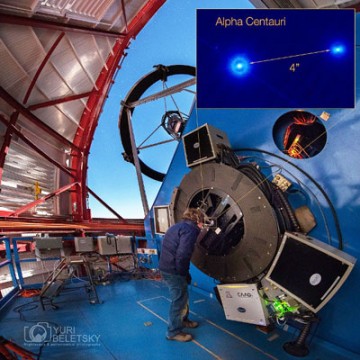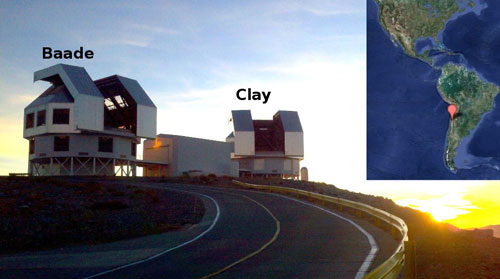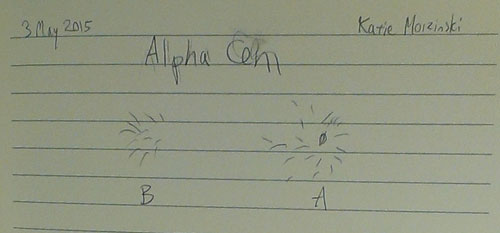
Yuri Beletsky / Carnegie Observatories; inset: Jared Males
Even on the darkest, clearest night, turbulence in our atmosphere moves the air between us and outer space, bending and shifting starlight. Pretty as they are, those twinkling stars cause astronomers several problems, the main one being the loss of angular resolution.
Consider binary, or double, stars. Angular resolution is what enables us to separate a pair — if the stars orbit too closely, they will appear as one. Atmosphere-induced twinkling limits astronomical observations to a resolution of (roughly) 1 arcsecond, and amazingly, this is as true on a 10-cm (4-inch) backyard telescope as it is on the 10-meter (33-foot) Keck telescopes in Hawaii.
One way to avoid twinkling is to escape Earth’s atmosphere. The Hubble Space Telescope is “diffraction limited” — soaring above most of the atmosphere in low-Earth orbit, the telescope’s angular resolution is set by the ratio of the wavelength of light to the diameter of the primary mirror. Since the primary mirror is 2.4 meters across, Hubble can resolve two stars in visible light even if they are just 0.05 arcseconds apart -- a factor of 20 better than from the ground.
Now imagine for a moment what it would be like to look through Hubble with your eyes . . .
That becomes a possibility or Earthbound telescopes that use adaptive optics (AO), which measures the atmospheric turbulence and then bends a mirror to correct the bent path of the light rays. In other words, AO stops the stars from twinkling.

Jared Males; inset: Google Maps
I work on one such system, called MagAO, which is mounted on the 6.5-meter Magellan Clay telescope at Las Campanas Observatory in Chile. Our system is special for a few reasons. To correct the turbulence, we use a thin mirror with 585 magnets glued to the back, which serves as the telescope’s secondary mirror We push and pull on the magnets 1,000 times a second to respond to and correct for atmospheric changes. Most AO systems built so far work only in the infrared. MagAO works at those wavelengths too, but it also corrects visible-light images. A special beam-splitting optic enables us to take visible and infrared images simultaneously. With such a large primary mirror, MagAO achieves resolution as good as 0.02 arcseconds at visible wavelengths —even better than Hubble.
Usually, AO systems feed into cameras, which take long-exposure pictures of the night sky. But just a few weeks ago, we got the opportunity to see the results with our own eyes. We were setting up for our current observing campaign, but our infrared science camera, Clio, wasn't quite ready to go. So for our first night, we instead mounted a simple eyepiece in Clio's place and replaced the special beam-splitter with a red filter that passes wavelengths longer than 685 nanometers.
We pointed the Clay telescope at the Alpha Centauri binary system and turned on the MagAO system. The difference was dramatic: we watched as each twinkling blob collapsed into a stable point of light. With our own eyes, we saw details as fine as 22 milliarcseconds across, even sharper than if we were using Hubble!

Katie Morzinski
You can read more about our night of eyepiece observing at the MagAO team's blog. We are in the middle of a 6-week observing run, and we post a daily update. Follow along as we explore the universe at the limit of diffraction!
Jared Males is a NASA Sagan Fellow at the University of Arizona, where he studies exoplanets with direct imaging and adaptive optics. He received his PhD from the University of Arizona in 2013, where he helped develop the Magellan AO system and its VisAO camera.
 1
1
Comments
June 13, 2015 at 2:16 pm
You said..."You can read more about our night of eyepiece observing at the MagAO team's blog" When I went there I was thinking you'd talk about your night of observing and all the things you saw thru such a magnificent instrument but you only talked about Alpha Centauri. Am I missing something here?
Thanks
You must be logged in to post a comment.
You must be logged in to post a comment.